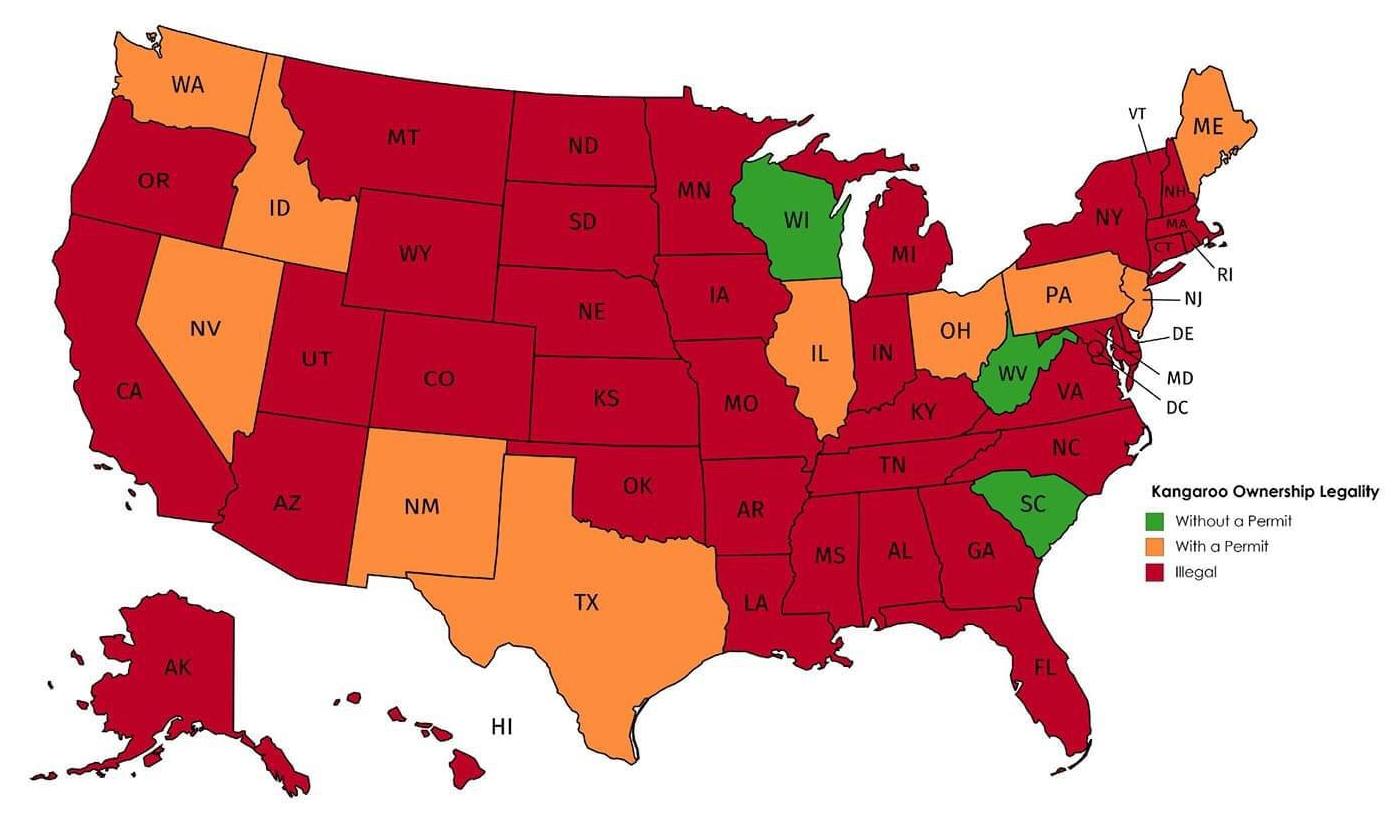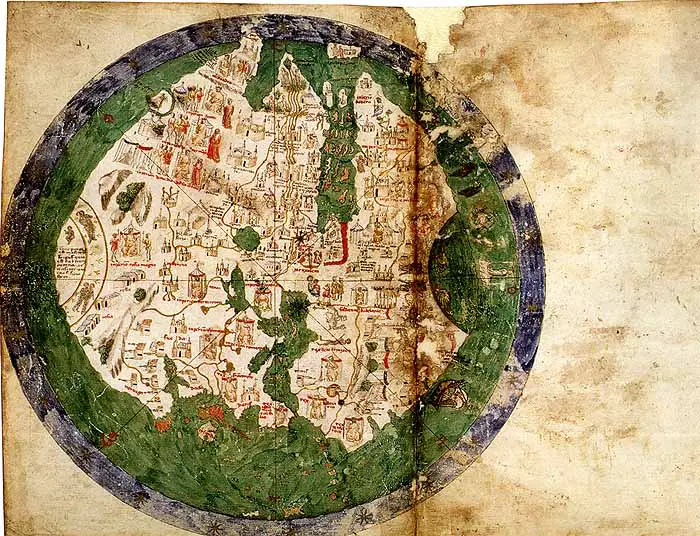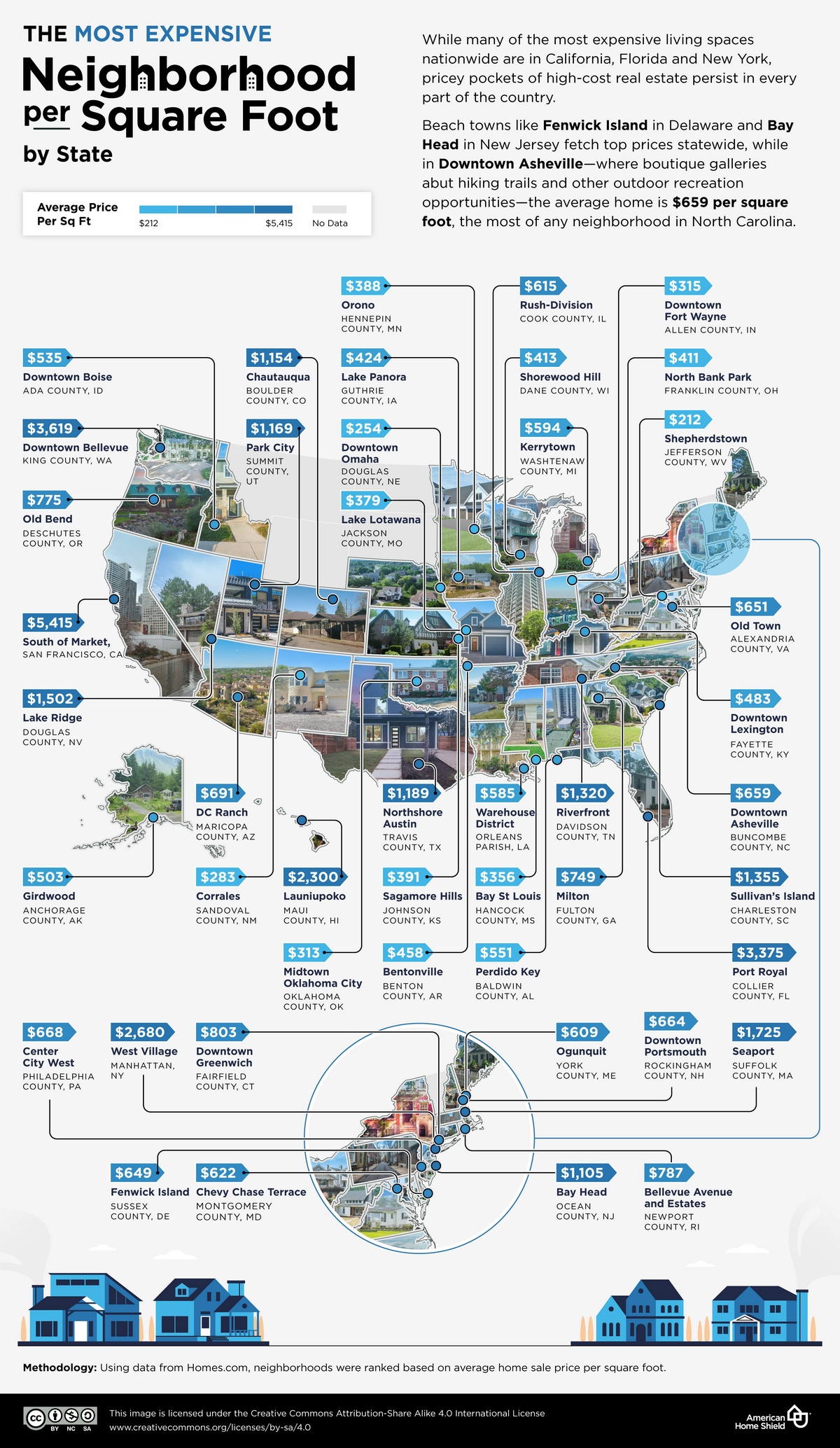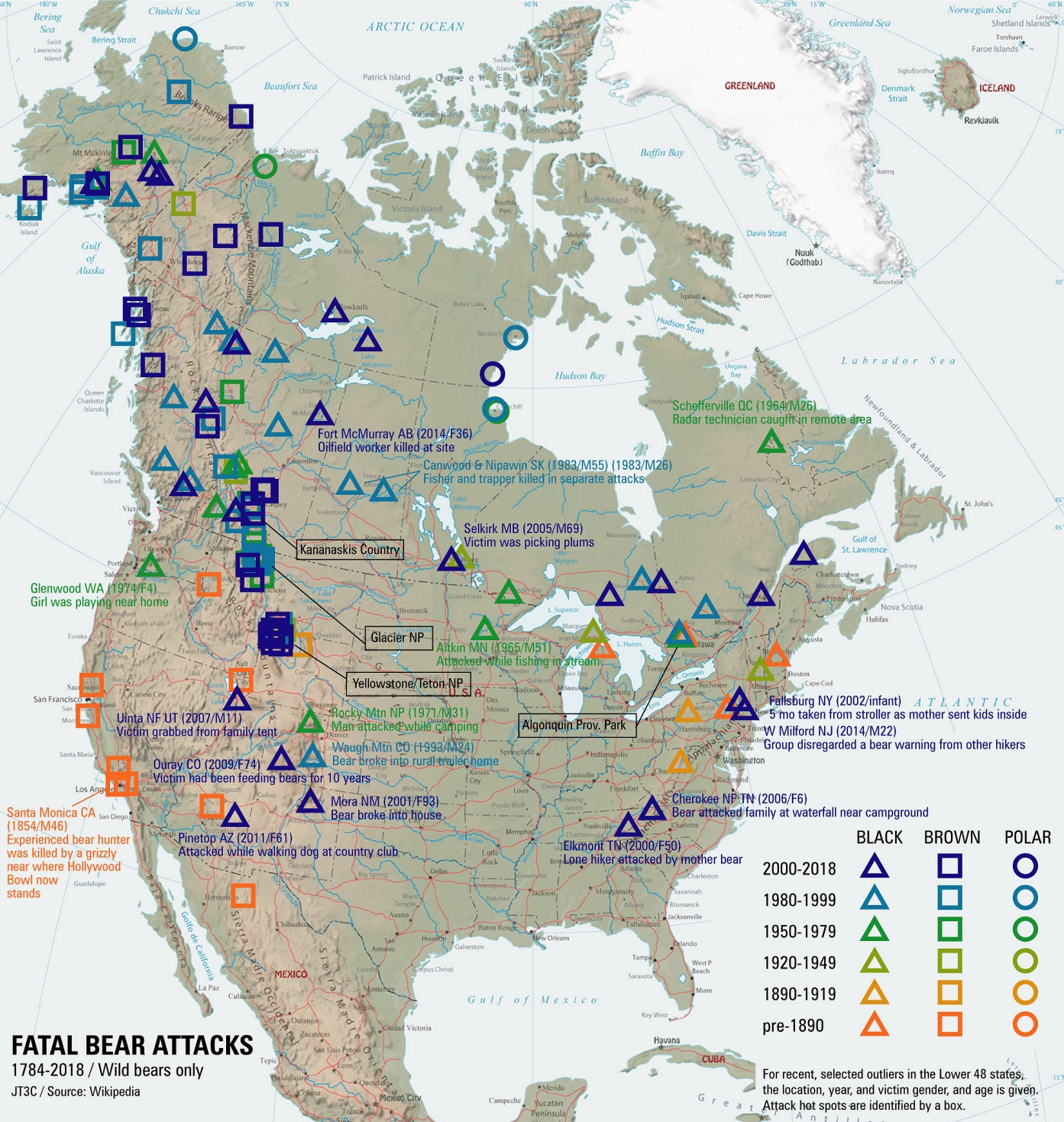Arctic Cities: Who Actually Lives Up There?
It’s easy to imagine the Arctic Circle as a frozen wasteland dotted with polar bears and drifting icebergs – but there are actually quite a few cities up there, and some of them are surprisingly large. A map created by cartographer Kenneth Wong (@Kenneth_KHW) for #30DayMapChallenge 2024 shows where people live above the 66°33′N latitude.
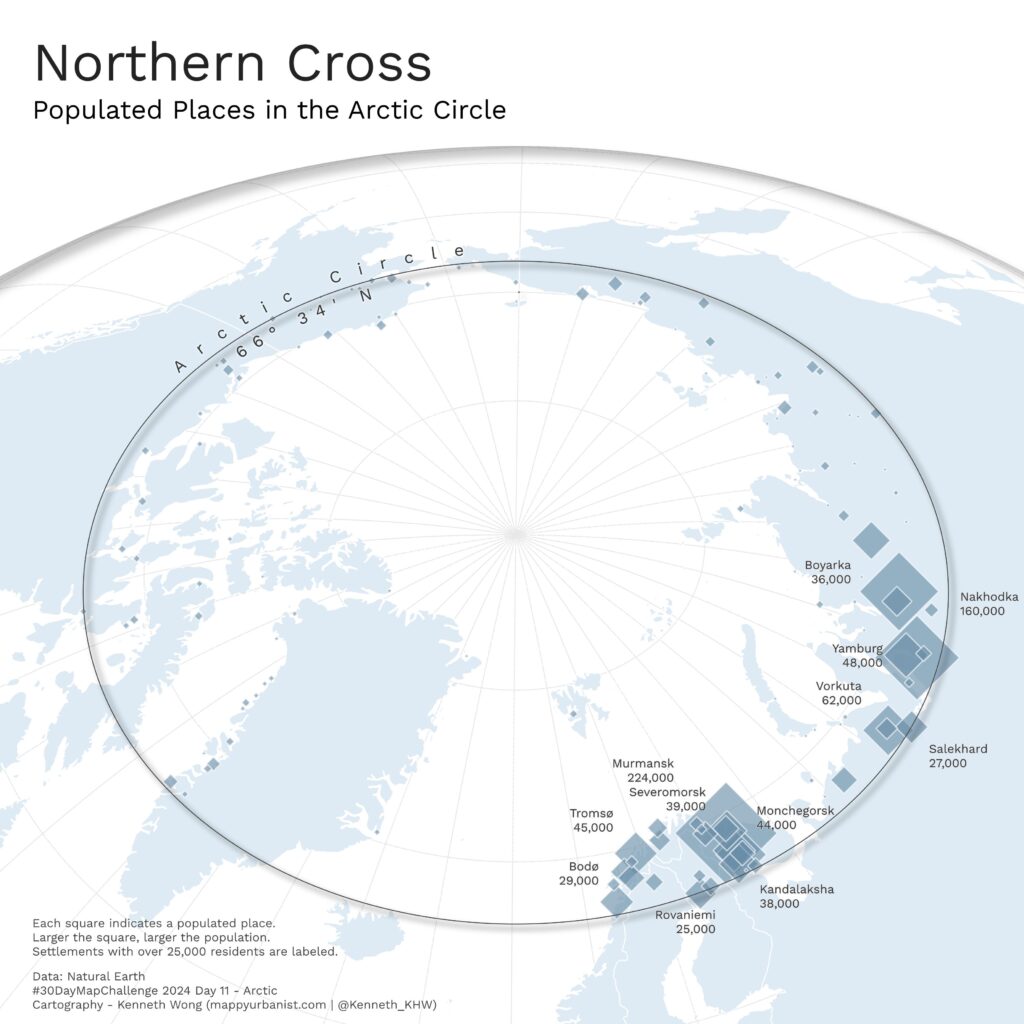
Each square on the map represents a populated place within the Arctic Circle. The bigger the square, the larger the population (on the map, only places with over 25,000 residents are labeled).
Here’s a quick look at those places:
| City | Country | Population |
|---|---|---|
| Murmansk | Russia | 224,000 |
| Nakhodka | Russia | 160,000 |
| Vorkuta | Russia | 62,000 |
| Yamburg | Russia | 48,000 |
| Tromsø | Norway | 45,000 |
| Monchegorsk | Russia | 44,000 |
| Severomorsk | Russia | 39,000 |
| Kandalaksha | Russia | 38,000 |
| Boyarka | Russia | 36,000 |
| Bodo | Norway | 29,000 |
| Salekhard | Russia | 27,000 |
| Rovaniemi | Finland | 25,000 |
Murmansk stands out as the largest Arctic city. It was founded in 1916 as a port for ice-free access to the Atlantic via the Barents Sea. During WWII, it was a key supply point for the Allies. Even today, it’s home to Russia’s Northern Fleet and a hub for Arctic shipping
Vorkuta, meanwhile, grew around coal mines, originally developed by forced labor during the Gulag period. Now, the population is shrinking as mining jobs vanish and younger generations leave for southern cities.
Other Russian Arctic towns, like Monchegorsk and Yamburg, were built around heavy industry. Severomorsk is tightly connected to Russia’s naval operations and houses key military infrastructure. Salekhard, interestingly enough, is positioned right on the line of the Arctic Circle.
Norway’s Tromsø and Bodo, along with Finland’s Rovaniemi, are the largest Arctic settlements outside of Russia. Tromsø is known for its Arctic University and is a popular base for scientists and tourists. Rovaniemi markets itself as the “official” hometown of Santa Claus, but it’s also an administrative and logistical center for Finnish Lapland.
If you’re scanning the map and thinking, “Most of these towns are in Russia,” you’re absolutely right. But why is that the case?
The answer lies in the Soviet Union’s old blueprint. Northern expansion wasn’t left to chance—many Arctic towns were purpose-built in the mid-20th century to support mining, oil and gas development, and military outposts. Norilsk, for instance, sprang up near rich deposits of nickel. Murmansk, positioned on the Kola Peninsula, became Russia’s gateway to ice-free Atlantic waters. The pattern here isn’t coincidental—Soviet planners strategically established most of these communities to secure territorial claims and extract the region’s mineral wealth from beneath the permafrost. Maintaining cities in these conditions costs a fortune. Winter temperatures can drop below -40°C, which destroys concrete and warps metal infrastructure. Roads need constant repair because the ground expands and contracts with seasonal temperature swings. Getting groceries, fuel, or construction materials to these places often means flying everything in during winter or stockpiling supplies during the brief summer when ships can navigate Arctic waters.
The economics make sense when you consider what’s buried up there. Russia’s Arctic territories contain some of the world’s largest untapped oil and gas fields, not to mention nickel, copper, and rare earth minerals. Then there’s the Northern Sea Route – as ice melts, this shipping corridor could cut weeks off cargo trips between Europe and Asia. The Arctic Institute puts Russia’s northern population at over 2 million people, which dwarfs every other Arctic nation.
You might think these towns exist in their own bubble, but they’re actually plugged into global events in surprising ways. When European countries started cutting Russian energy imports after 2022, Arctic workers felt it immediately through plant closures and budget cuts. American sanctions on Arctic drilling projects? That translates to canceled jobs in places like Yamburg.


